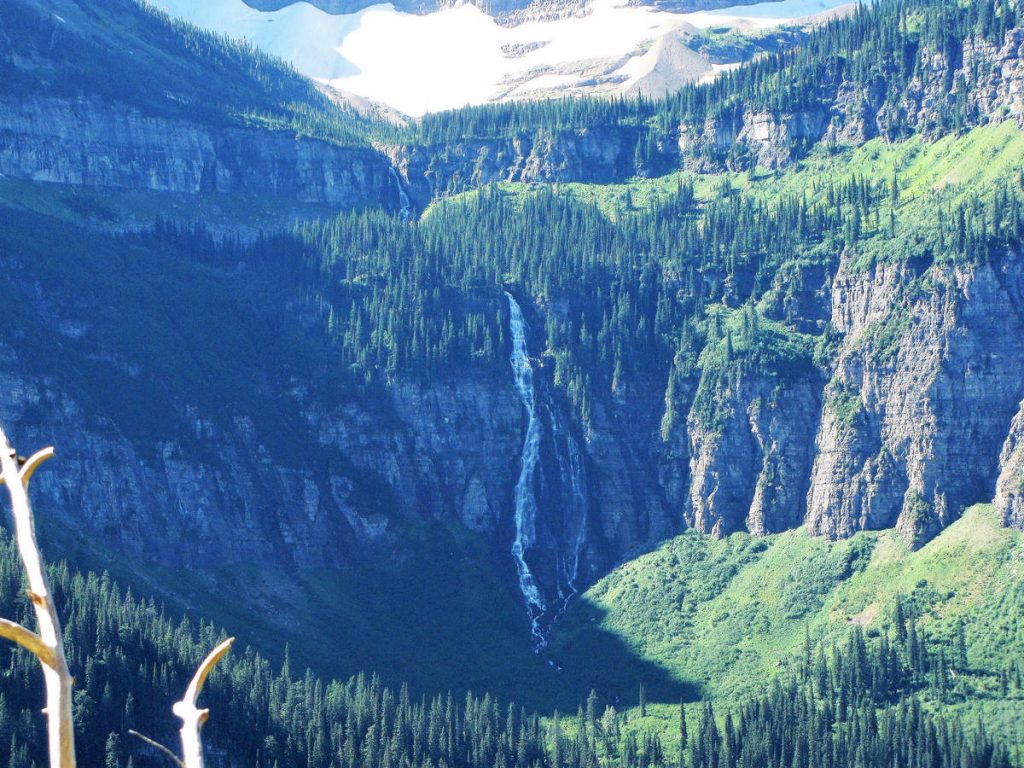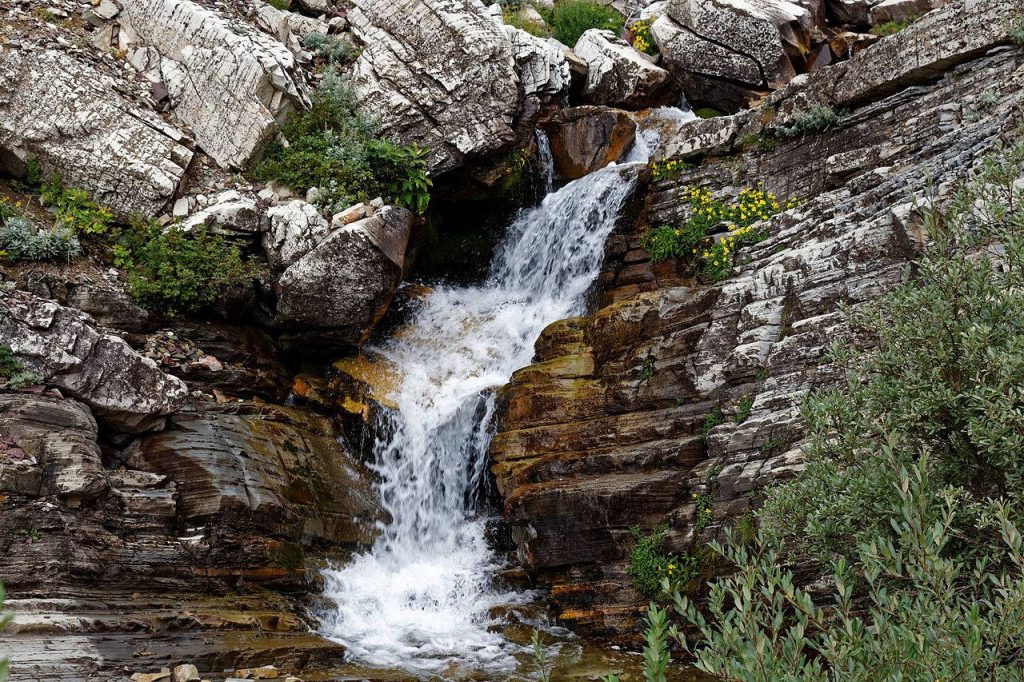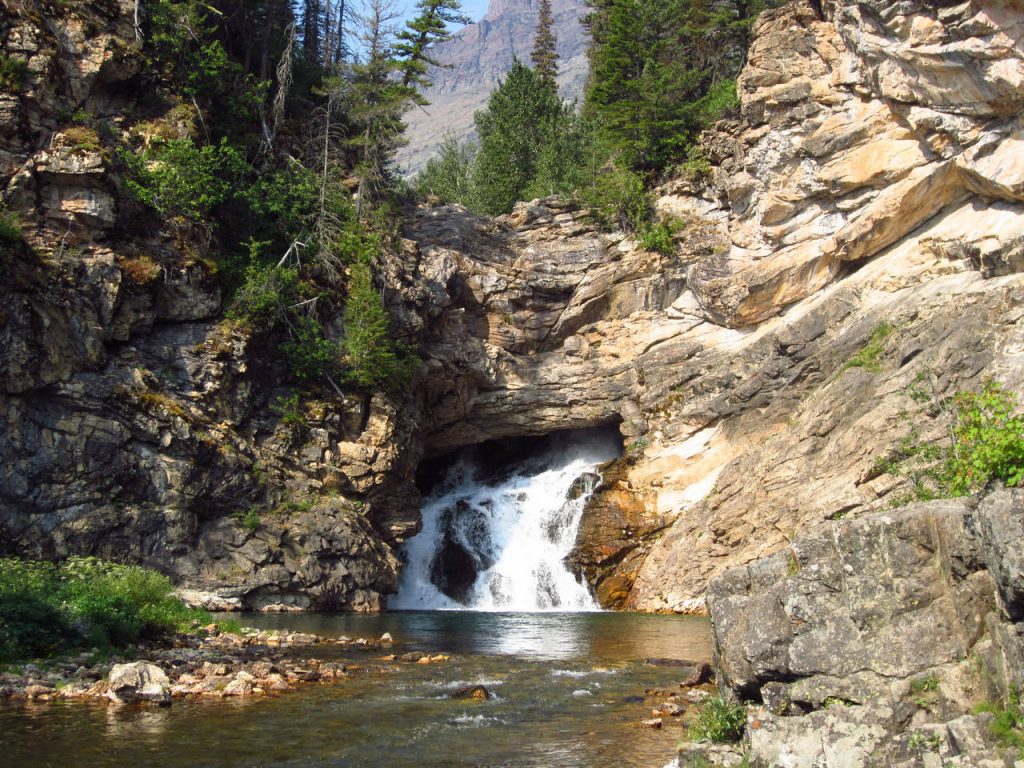Montana is one of the most scenic and unique states in the United States. It is the fourth largest state, however, has a population of just over one million!
Bordering the Rocky Mountains to the west and Canada to the north, it has adopted the name “Big Sky Country” State where several Hollywood movies are filmed. It is a land of diverse landscapes with open mountains and plains including Glacier National Park. Montana is categorized hiker’s paradise with so much to explore; the Rocky Mountain Range, uncountable species of different shrubs and trees, exotic wildlife, rivers and lakes, and amazing waterfalls.
Glacier National Park in northwestern Montana is home to more than 200 stunning waterfalls (mostly unnamed) spread throughout the park. During the dry season, many of these picturesque waterfalls are reduced to only a few drops! Although numerous waterfalls are not named, those that are recognized and named are readily visible to the naked eye offering one of the most majestic views that nature has to offer.
Let’s take look at the most popular and recognizable waterfalls present in Glacier National Park in Montana.
BIRD WOMAN FALLS
Measuring 560 feet (170m), Bird Woman Waterfall is located west of the continental divide in Glacier National Park. They can be viewed from a distance of 2 miles (3.2 km) when driving on the Going-to-the-Sun Road which cuts the park into north and south.
Interestingly, the height of these waterfalls is open to debate because the World Waterfall Database shows a height of 960 feet (293 meters), however when viewed from the Going-to-the-Suns road the height is much lesser. The higher listing in the database is probably due to another waterfall that is connected to Bird Woman falls through various cascades.
The waterfall is fed by the snowfields and the remaining glacier in the north and the western side of Mount Oberlin. The flow of the falls is at its greatest in the latter part of the spring season and the start of summer, while during autumn the waterfall almost stops flowing.
The falls exit into a dense forest and disappear into the emerald base of the mountains prompting tourists to photograph this stunning occurrence, typically leaving them awestruck at the magnificence of the scene.
It can be a daunting task to view this waterfall up close. It would require visitors to demonstrate incredible route tracing and bushwhacking skills to go close to the falls, hence most tourists view the falls along the Going-to-the-Sun Road.
APIKUNI FALLS
Measuring roughly 700 feet (213 meters) these waterfalls are breathtaking, especially after the snow has melted in the spring season. The falls can be described in two parts; the first part is a free fall from the top of the cliff, while the other can be described as a visible cascade below the main fall which is a tempting sight for the photographers.
At first, the name of this waterfall may seem a bit odd; however, it is derived from the name given by the Blackfoot Indian to James Willard Shultz, who was a guide, as well as author, historian, explorer, and fur trader. In the Blackfoot terminology, Apikuni means white robe or spotted white robe. Shultz lived with the Pikuni tribe during the 1880s.
You can view the falls at a distance when you park your car at the Many Glacier Hotel. The trail begins at wide-open grassland with majestic mountain peaks all around.
When you begin the ground is level, then you continue to climb steeply through the forest arriving at the base of the cliff where you are showered with the water from the falls. If you struggle a bit, you can reach right up to the face of the falls.
The trail through the meadows during spring can be quite scenic as you can see flowers, bears, and bighorn sheep. Closer to the lake, you may see moose as well.
RUNNING EAGLE FALLS
At a height of 32 feet (10 meters), Running Eagle Falls, sometimes called the Trick Falls, are one of the most accessible waterfalls in Glacier National Park – they can even be accessed by people in wheelchairs. A cursory look at this waterfall can seem deceptive because the waterfall seems to be falling in on itself. The reason behind this strange – or interesting – occurrence is that in the spring season there is a larger influx of water resulting in a 40-foot (12 m) free fall of water that deceptively hides the cascade below which emerges from an underground cave.
There is a well-maintained trail to the waterfall facilitating even the handicapped and families. It is one of the two trails in Glacier National Park which is accessible to the handicapped – the other being the Trail of the Cedars.
The hike is just over one-half mile to and from. You just step out of the car, stroll 300 ft (100 m) or so, cross a footbridge, walk another 300 ft (100 m), and view the waterfall.
The trailhead of the Running Eagle Falls is 1.1 miles (1.75 km) from the fee station.
OTHER WATERFALLS
The above-mentioned waterfalls are just a few of many scintillating waterfalls found in Glacier National Park, Montana. There are numerous waterfalls outside the park’s perimeter. Each waterfall has its unique features and trails, while many of the waterfalls, especially in remote areas can only be viewed from a distance.
Other waterfalls inside the park, and popular with tourists are:
- Virginia and St. Mary’s Falls
- Baring Falls
- Florence Falls
- Redrock Falls
- Ptarmigan Falls
Outside of the park, there are several other waterfalls spread across the state of Montana, namely:
- Crow Creek Falls at Broadwater County
- Kootenai Falls near Libby
- Woodbine Falls at Stillwater County
- Ousel Falls at Gallatin County
- Calamity and Sentinel Falls at Beartooth Mountains (Carbon County)
- Pinkham Creek Falls at Lincoln County
- Holland Falls at Missoula
- Memorial Falls at Neihart




